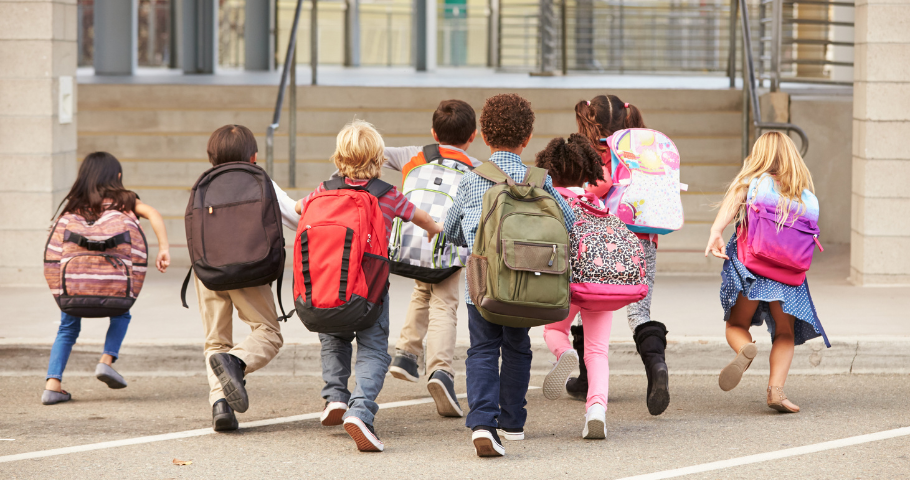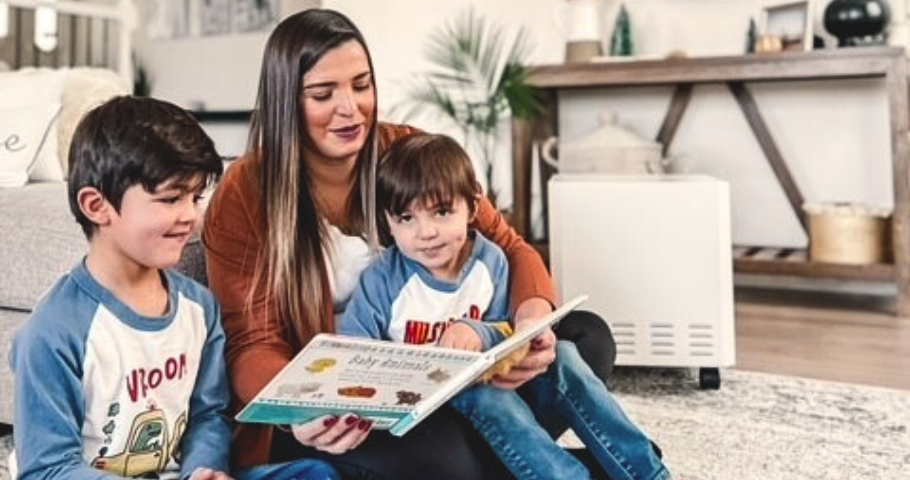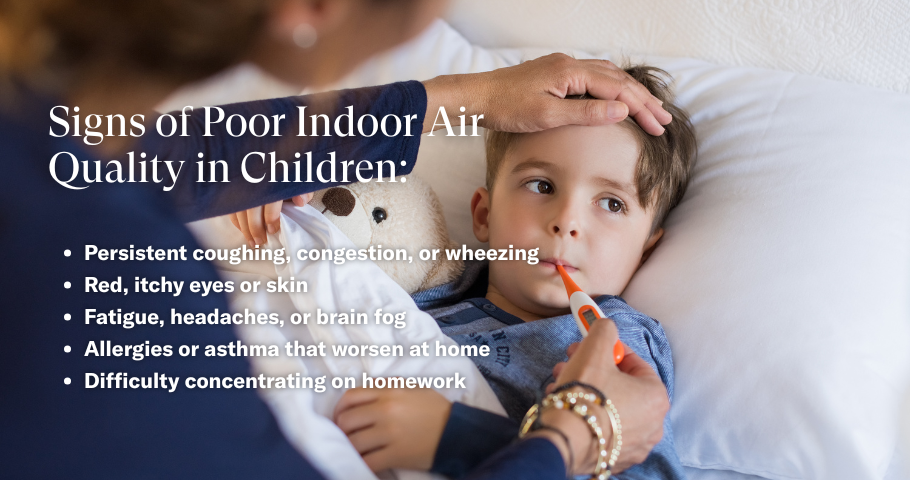How to Protect Your Home from School Season IAQ
As summer winds down and kids head back to school, the shift isn’t just about routines, earlier bedtimes, and packed lunches—it also brings significant changes to your home environment, especially your indoor air quality (IAQ). With increased traffic in and out of the house, more exposure to outdoor air, and the constant circulation of germs and allergens, your home becomes more vulnerable to air pollutants and other invisible intruders – a.k.a. school season IAQ.
And in today’s world, where indoor air pollution is often more harmful than what we breathe outside, understanding and actively managing IAQ during the school year has never been more critical.
In this blog, we’ll explore how the back-to-school season can directly affect your family’s indoor air quality, how children are uniquely vulnerable to air pollution, and what you can do to maintain a healthier home environment this fall.
Why Indoor Air Quality Matters More During the School Year
The start of the school year turns your home into a revolving door. Backpacks, shoes, books, lunchboxes—and sometimes even viruses—make their way in and out each day. Every time your child walks through the door, they may unknowingly bring in more than just homework. They also introduce particulate matter, allergens, and potential pathogens that contribute to indoor air pollution.
According to the U.S. Environmental Protection Agency (EPA), the levels of indoor air pollution can be two to five times higher than outdoor air. That’s a startling fact—especially during the school season, when outdoor air exposure increases and indoor time spikes due to homework, earlier bedtimes, and indoor extracurricular activities.
In short, your child may actually be breathing in more air pollutants at home than they are outside. And that exposure adds up quickly over time.
Backpacks, Clothing & Shoes: Unexpected Carriers of Pollution
It might seem harmless, but where your child tosses their backpack or kicks off their shoes can have a measurable impact on your home’s indoor air quality.
Outdoor air contains microscopic pollutants like PM2.5—fine particulate matter that is 2.5 microns or smaller in diameter. These particles can cling to clothing, backpacks, and shoes. Once they enter your home, they settle onto surfaces and floors. Every time someone walks across the room, plumps a couch cushion, or unzips a bag, those air pollutants are re-released into the air.
Without proper filtration or air purification, these particles from the outdoor air circulate continuously—making your home’s air dirtier with each passing day.
To reduce the impact:
- Store backpacks and shoes near entryways or in sealed bins
- Vacuum frequently with a HEPA filter vacuum
- Change and wash clothes after school
- Use air purifiers in high-traffic areas

Germs and Viruses That Tag Along
It’s no coincidence that colds and flu often spike just a few weeks after school starts. With kids spending hours in close quarters, from classrooms to buses to aftercare programs, viruses spread like wildfire.
But what most parents don’t realize is that these microbes don’t stay at school—they come home.
Germs that travel through the air or cling to surfaces can accumulate in your indoor environment. And because windows are often closed during fall, and HVAC systems may be running less frequently, ventilation can become stagnant—creating a perfect breeding ground for indoor air pollutants.
Common Back-to-School IAQ Threats Include:
- Bacteria and viruses from shared classroom spaces
- Mold spores from damp clothing or lunchboxes
- Outdoor air contaminants like pollen or vehicle exhaust brought in on clothes
- Dust and dander stirred up by increased home activity
- VOCs (volatile organic compounds) from new school supplies, markers, or tech devices
All of these contribute to a decline in indoor air quality, which can trigger allergy symptoms, asthma attacks, or increased susceptibility to colds and flu.
HVAC Systems & Ventilation: Your First Line of Defense
During the fall school season, your HVAC system is doing more than just regulating temperature—it’s managing your entire home’s ventilation and filtration. And if it’s not up to par, your air may be full of indoor air pollutants you can’t see or smell.
Here’s what you can do:
- Replace HVAC filters every 1–3 months like those from EnviroKlenz, designed to trap both allergens and chemical pollutants.
- Schedule professional HVAC cleanings before major seasonal shifts.
- Use smart thermostats that optimize airflow throughout the day.
- Install dedicated air purifiers, especially in bedrooms and homework zones.
Properly maintaining your HVAC system can dramatically improve your indoor air quality, especially during the high-traffic school year.

Why Children Are More at Risk from Indoor Air Pollution
Children are particularly vulnerable to air pollution, especially the kind that accumulates indoors. Their lungs are still developing, they breathe more air per pound of body weight than adults, and they spend a significant portion of their time indoors—particularly during the school year.
Increased exposure to air pollutants during critical developmental years has been linked to:
- Asthma development or worsening symptoms
- Chronic respiratory infections
- Increased lung inflammation
- Impaired brain development and lower academic performance
Studies also show that early exposure to indoor air pollutants like VOCs, formaldehyde, and particulate matter can have lasting effects well into adulthood.
Simply put, clean air is not just a nice-to-have—it’s foundational to your child’s health, development, and well-being.
Smart IAQ Monitoring for Smarter Parenting
The good news? You no longer have to guess what’s in your air.
Thanks to smart home technology, it’s easier than ever to monitor indoor air quality in real-time. Tools like the EnviroKlenz SMART IAQ Monitor track pollutants like carbon monoxide, carbon dioxide, VOCs, humidity levels, and particulate matter such as PM2.5, giving you full visibility into what your family is breathing.
When paired with the SMARTView AQI platform, you’ll not only get data about your indoor environment—you’ll also receive real-time outdoor air quality updates and personalized recommendations for improving your air.
With these tools, you can make informed decisions like:
- Whether it’s safe to open windows based on outdoor air quality
- When to turn on your purifier or adjust your HVAC settings
- If certain cleaning products or school supplies are releasing VOCs
Carbon Monoxide and Carbon Dioxide: Invisible Dangers
As temperatures drop, many homes turn to space heaters, fireplaces, and gas stoves—unintentionally introducing air pollutants that can quickly become dangerous.
Carbon monoxide (CO) is a colorless, odorless gas that can be deadly. Carbon dioxide (CO₂), while not toxic at normal levels, can cause fatigue, drowsiness, and decreased concentration when it builds up indoors.
Both are especially dangerous for children, whose smaller bodies and developing organs are more sensitive to changes in air chemistry.
Signs of Carbon monoxide and Carbon dioxide exposure include:
- Headaches
- Dizziness
- Trouble focusing or learning
- Nausea or shortness of breath
A smart IAQ monitor can alert you before symptoms arise—giving you time to ventilate, activate purifiers, or repair faulty appliances.
Building Healthy After-School Habits
Creating an IAQ-safe home starts with consistent routines that minimize pollutant buildup. These don’t need to be complicated—just intentional.
Try These Simple Daily Steps:
- Designate a shoe-free, backpack-drop area near your entrance
- Wipe down school items, lunchboxes, and electronics daily
- Have children change into “indoor clothes” after returning home
- Ventilate your home during times of low outdoor air pollution
- Run an air purifier during and after homework time
Consider using an advanced system like the EnviroKlenz Air System Plus, which targets both biological and chemical air pollutants and is safe to use around children and pets.
Recognizing the Signs of Poor Indoor Air Quality in Children
You may not see air pollution, but your child’s body can reveal clues. Be on the lookout for these recurring symptoms during the school year:
- Persistent coughing, congestion, or wheezing
- Red, itchy eyes or skin
- Fatigue, headaches, or brain fog
- Allergies or asthma that worsen at home
- Difficulty concentrating on homework
If these signs appear frequently, it could be due to indoor air pollution. Integrating IAQ monitors and upgrading filtration may dramatically improve your child’s symptoms—and your peace of mind.

Make Indoor Air Quality a Back-to-School Priority
You can’t control the air your child breathes at school, but you can ensure the air they come home to is safe, clean, and supportive of their growth.
The start of the school year is the perfect time to assess your indoor air quality and take proactive steps to reduce exposure to air pollutants and germs. With the right tools—like smart monitors, upgraded HVAC systems, and high-efficiency air purifiers—you can create a healthier environment where your child can thrive academically and physically.
Explore the SMARTView AQI platform to gain real-time control over your home’s air. Because when it comes to your family’s health, especially during the hectic back-to-school season, clean air is not a luxury—it’s a necessity.
